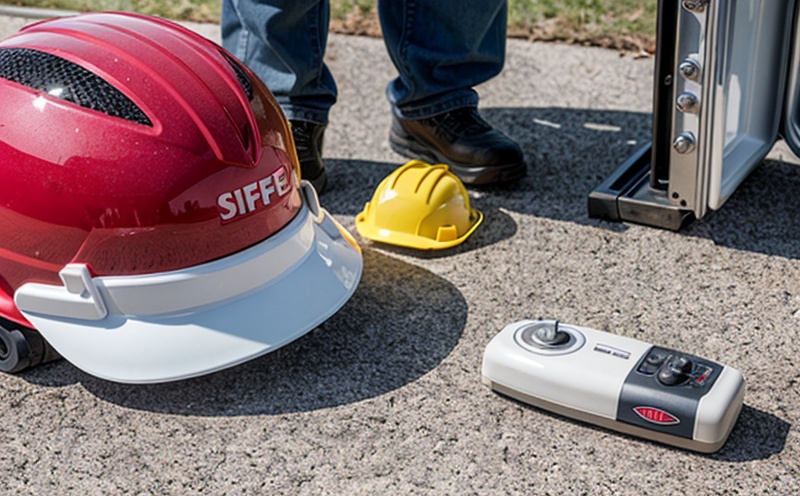ISO 18846 Emergency Lighting System Testing
The International Organization for Standardization (ISO) has established stringent requirements in ISO 18846 to ensure the reliability and safety of emergency lighting systems used on ships. This standard is critical for maritime environments where failure can lead to significant risks, including loss of visibility during emergencies.
Emergency lighting systems are designed to provide illumination when normal power sources fail, thereby ensuring safe evacuation procedures in the event of a fire or other disaster. The quality and performance of these systems directly impact crew safety and compliance with international maritime regulations.
The testing process outlined in ISO 18846 involves several key steps aimed at assessing the system's ability to function under specified conditions. These tests include voltage stability checks, light output measurements, duration tests, and shock resistance evaluations. Each of these parameters plays a crucial role in ensuring that emergency lighting systems meet both functional and safety standards.
During testing, specimens are subjected to controlled environmental factors such as temperature variations and humidity levels. This ensures that the system’s performance remains consistent across different maritime conditions encountered during operations at sea. Compliance with ISO 18846 is mandatory for all ships operating in international waters, making this service essential for shipbuilders, manufacturers, and operators.
Our laboratory adheres strictly to these guidelines, providing comprehensive testing services that include not only compliance verification but also detailed analytical reports on the performance characteristics of emergency lighting systems. This allows clients to make informed decisions about their equipment’s suitability for specific applications within various maritime sectors.
Why It Matters
Compliance with ISO standards is not only a regulatory requirement but also serves as a testament to the quality and reliability of emergency lighting systems. In marine environments, where darkness can exacerbate dangerous situations, reliable illumination becomes paramount.
The failure of an emergency lighting system during critical moments could result in severe consequences such as injury or even loss of life. By ensuring compliance with ISO 18846, ship operators and manufacturers can mitigate these risks while maintaining a robust safety culture aboard vessels.
Moreover, certification from reputable laboratories like ours adds credibility to the products being tested, enhancing trust among stakeholders including insurers, regulators, and end users. This transparency fosters confidence in the market regarding product integrity and operational readiness.
In summary, adherence to ISO 18846 ensures that emergency lighting systems perform optimally under adverse conditions, thereby safeguarding lives at sea. It is an indispensable aspect of maintaining maritime safety standards globally.
Applied Standards
| Standard Code | Description |
|---|---|
| ISO 18846:2017 | Specification for emergency lighting systems on ships |
| IEC 60598-1:2016 | Lighting equipment - Part 1: General requirements |
| EN 384:2017 | Self-contained escape breathing apparatus for use in ships’ accommodation areas |
| ASTM F3569-18 | Standard test method for determining the luminance of self-luminous emergency lighting devices |
| EN 12077:2010 | Self-contained escape breathing apparatus (SCBA) for use in ships’ accommodation areas and lifeboats |
Scope and Methodology
The scope of ISO 18846 Emergency Lighting System Testing includes assessing the following critical aspects:
- Performance under specified voltage variations to ensure stability.
- Luminous flux measurement to verify adequate light output.
- Durability testing for prolonged operation without failure.
- Shock resistance assessment to confirm robustness against physical impacts.
The methodology employed involves subjecting the emergency lighting system to predefined stress conditions that simulate real-world scenarios. This approach ensures accurate evaluation of how well the system will operate during actual emergencies at sea.
Detailed testing protocols are meticulously followed, with each phase documented thoroughly for future reference and validation purposes. Our laboratory uses state-of-the-art equipment calibrated according to international standards to achieve precise measurements throughout all stages of testing.





